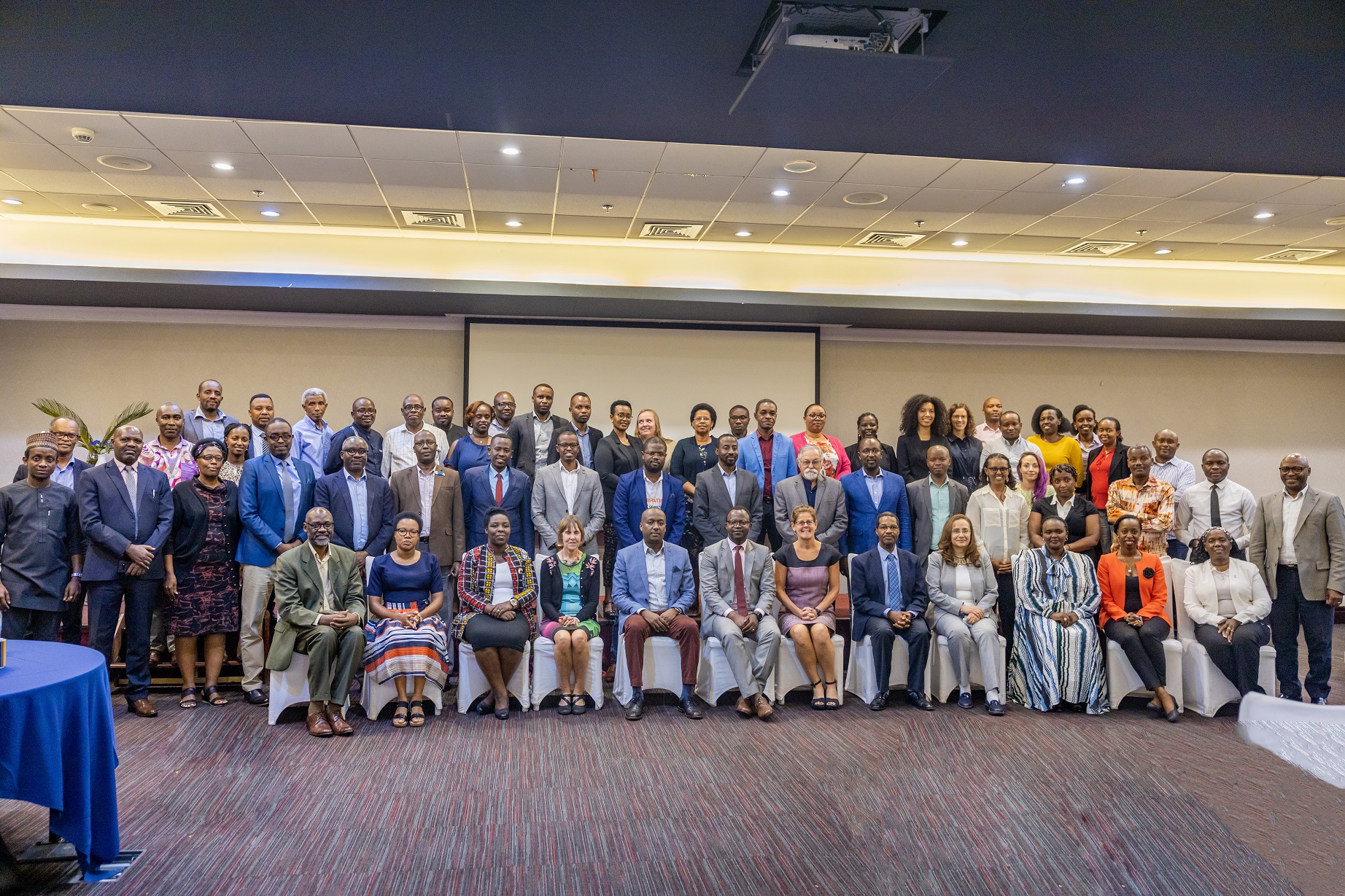This case study was originally published as a blog article on WHO AFRO iAHO.
By TRAN NGOC Candide, BADEJO Okikiolu, MOYO Thandekile N., SY Sokona & Serge Bataliack
The Government of Rwanda has been deeply committed to the Sustainable Development Goals (SDGs) and has taken a whole-of-government approach to owning, integrating, and implementing the SDGs. Integrating the SDGs into national development plans (Vision 2050, the National Strategy for Transformation - NST, NST1 (2017-2024)) reflects the government's continued commitment to using the goals as a blueprint to develop and achieve health-related SDGs.

Collaboration is key for strengthened SDG monitoring. © WHO Rwanda/Ms. Mutizwa Nyasha
Making information systems fit-for-purpose to monitor SDGs
Strengthening and adapting health information systems is key to Rwanda's efforts to achieve SDGs. To achieve this, Rwanda has taken a phased approach to strengthen its National Statistical Systems by implementing successive National Strategy for the Development of Statistics (NSDS-II 2014-18 and NSDS-III 2019-24) to integrate SDG indicators into the national framework for monitoring and evaluation.
The first step to identifying and fulfilling relevant health-related SDG indicator requirements was to develop an official national list of all SDG indicators assigned to all NST1 pillars. In 2019, the national statistical system produced 60 per cent of the SDGs applicable to Rwanda, across all sectors.
Furthermore, 70 percent of health-related SDGs were available for reporting in 2020. To address this data gap, the Ministry of Health worked with the World Health Organization (WHO) and other key stakeholders for Health-SDGs in Rwanda, namely the Rwanda Biomedical Center, National Institute of Statistics of Rwanda and other relevant ministries, institutions, and agencies to develop a comprehensive metadata handbook to integrate each selected health-SDG indicator into health information systems in Rwanda. This phased approach has increased the percentage of SDG indicators for which data is available and monitored through administrative data systems; and increased capacity of Rwanda's health information system (HIS) to provide timely, reliable, and disaggregated data for evidence-based decision-making and measure progress on SDG targets, including Universal Health Coverage.
Mr. Daniel Ntabanganyimana, Sector M&E and Reporting specialist at MoH, said that:
"In the past, gaps in the SDG indicators meant that accurate and timely statistics about some critical aspects of health SDG remain missing, leaving certain groups less than fully visible to decision-makers and poorly understood health challenges. As a result, it was impossible to know how good or bad we were doing. The new indicator metadata guidance is a great step toward more accurate population data; it makes us more aware of our local health challenges and helps us monitor progress everywhere. This makes all the difference to our work. It means we can see and reach more people. It means we have a better chance of leaving no one behind."
Making Partnership and Coordination effective for a better health information system
One key lesson in Rwanda's SDG implementation is that national ownership and leadership are essential for effective partnerships and coordination. Rwanda's commitment is evident in the country's high-level political buy-in, which has translated into intersectoral cooperation and establishing clear linkages between the health sector strategy and the National Strategy for the Development of Statistics.
Establishing clear mechanisms for coordination and communication between external partners and national stakeholders also ensured alignment with national priorities. A prime example of this is the country commitment to establish a multisectoral Health-SDGs Task Force to serve as a platform for inter-agency collaboration and coordination between Government Ministries, Development Partners, Civil Society Organizations, and the Private Sector.
Reinforcing key health information systems is another key pillar for Health-SDGs monitoring. In this regard, one of the key achievements of the Ministry of Health and partners has been the digitization of healthcare in Rwanda. One of the main priorities was creating a National Health Information Exchange (HIE) platform to provide a secure, reliable, and interoperable way for health data to be exchanged between different HIS components and other data systems. The development of the platform is finalized and the HIE platform is being tested in selected health facilities. Additionally, the Rwanda Health Observatory will serve as a one-stop shop for all health data related to the SDGs and will provide users with easy access to data from multiple sources in a single location. It will also allow for data visualization, making it easier to identify trends and patterns.
SDG3 GAP partners play prominent roles in strengthening Health-related SDG monitoring within the United Nations (UN)’s Joint Programme on Data. UNFPA supported the National Institute of Statistics of Rwanda (NISR) to allow for collecting age, gender, and disability disaggregated data through the Integrated Household Living Condition (EICV) Surveys. UNFPA supported the mobilization of resources to prepare the 2022 Population and Housing Census. Through UNWOMEN’s support, the NISR was able to collect important gender data for the sixth 2019/2020 Demographic and Health Survey (DHS6) in particular the domestic violence data as well as the production of gender thematic reports from the Establishment Census 2020. UNICEF supported the NISR to develop a new Multidimensional Overlapping Deprivation Analysis (MODA) using the DHS6 data. At the same time, the WHO provided technical and financial assistance in monitoring health-related SDGs and, together with other UN agencies, in strengthening the civil registration and vital statistics (CRVS) system and other administrative systems. The WHO also provided financial resources through the Health Systems Connector of the Access to COVID-19 Tools accelerator (ACT-A) to strengthen electronic health records (EHR). Collectively, SDG3-GAP partners have contributed to capacity building for health workers on data use and analysis.
The pursuit of an integrated health information system, a central tenet of the SDG's achievement in Rwanda, is accelerating collaborative progress for health-related SDGs. The efforts put Rwanda firmly on course to begin to identify helpful synergies and high-impact interventions that can be leveraged to accelerate progress toward SDG3.
